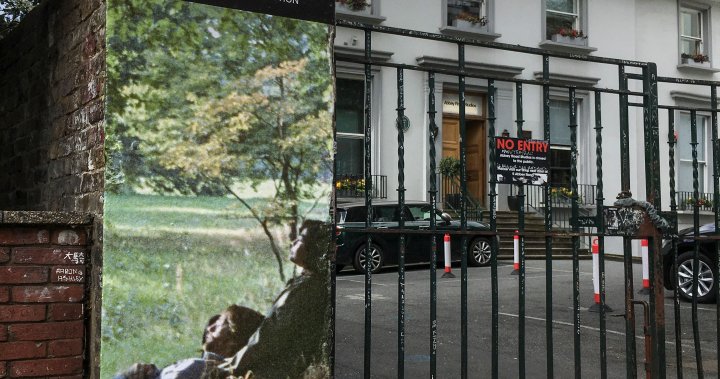Back in September 2019, I was invited to London to hear the new 50th-anniversary edition of The Beatles’ Abbey Road album. The listening session took place at Abbey Road itself, inside the hallowed Studio 2 where this album (and so many others) were created.
Technically, it was the best-recorded album of The Beatles’ career as the studio had upgraded from its original 3- and 4-track machines using 1/4-inch tape used for everything up to the White Album. The band and producer George Martin could now avail themselves of the latest 8-track recorders using much wider tape, which resulted in much better audio. Abbey Road is also my favourite Beatles album, a record so familiar — I literally grew up listening to it — that I know every tiny nuance in those recordings.
What I heard astonishing.
Giles Martin, George’s son, had been entrusted with enhancing a 1969 recording with 21st-century technology with the input of Paul McCartney and Ringo Starr. If I had to draw an analogy, it’s as if a hitherto imperceptible haze has been removed from a window. The new view was clearer, sharper, and more vibrant. The vocals were more realistic, the steel guitar strings brighter, and Ringo’s drums thunkier. I swear you can hear Paul’s fingerprints slide along the windings of the strings on his bass. I love this version of the record.
However, that feeling is not universal. There are those who believe that classic recordings should be left alone. Not only were they just fine the way they were, but altering their sonic properties is altering history itself. There was considerable kvetching about the refurbished editions of other Beatles records, especially Sgt. Pepper. Changing the sound of such a classic album changes the way you perceive it, the way you remember it, the memories the music conjures, and even the emotions associated with the music. Music industry commentator Bob Lefsetz has been very vocal about his displeasure.
It’s no longer the important record you remember. It’s now artificial, a facsimile of what made it great in the first place, enhanced in the same way food is with a dash of MSG. Why would you mess with perfection?
Up until now, this argument has been limited to remastered and/or remixed re-releases of well-known albums. Now, though, alterations being made to tens of millions of songs. More on that in a minute.
It’s a fact that the last couple of generations of music fans have been listening to music that’s of substandard audio quality. They’ve grown up on MP3s and similarly compressed digital music files, which are squished from their original state by removing up to 90 per cent of the musical information using algorithms based on the principles of psychoacoustics. They sound fine but when compared side-by-side with the original .wav file (which is what you have on a CD), you can notice the difference. Well, some people can, anyway.

Here, then, is the truth. The music consumed by most of the planet over the last 20 years doesn’t sound as good as what was enjoyed in the past — even as far back as the 1960s. We’ve spent the last couple of decades going backwards when it comes to high-fidelity audio.
There have been efforts to correct that, starting with DVD-Audio and Super-Audio Compact Discs in the very early 2000s. I have a shelf full of these virtually extinct discs, all recorded at a much higher resolution than a normal compact disc. Some have even been remixed into 5.1 audio for use on home theatre systems. They sound great, but can only be played on DVD players. The industry abandoned them.
Then came a push for High-Res Audio, forms of “lossless” (i.e. uncompressed) digital tracks. Listening to a carefully engineered 24-bit 192 kHz FLAC recording can be transcendent. One of my favourites is the High-Res Audio version of Bob Marley’s Legends album which reveals subtleties never before audible. Just stunning. Take your breath away stuff.
High-Res Audio isn’t enhancing audio; it’s just a way of sucking out more of the information available on the original master analogue tapes. If songs were recorded digitally — that’s the way it’s been for most recordings since the 1990s — there’s a very good chance that they were committed to the hard drive at better-than-CD quality before being downscaled for release. High-Res Audio simply gives us a chance to hear the level of fidelity at which the material was recorded. It’s what the artist and the producer would have heard in the control room before everything was shipped off to be pressed to vinyl, CD, or converted into a compressed digital format like iTunes AAC.
The latest bid to return back to the future involves streaming music services upping their audio game with their various versions of High-Res Audio. While Tidal has been offering full-fidelity lossless tracks for some time, you had to pay extra. Amazon Music was doing the same. But this month, Apple Music announced that it was going lossless for no extra charge. Amazon immediately dropped their premium for lossless. And now Spotify is under pressure to speed up the rollout of its lossless offerings.
Apple, however, also has something called Spatial Audio, which creates a more immersive audio experience through just two channels and directly largely at those who listen to music almost exclusively through headphones and earbuds. Creating this 3D sensation involves a partnership with Dolby ATMOS whereby some sort of electronic voodoo is applied to the original recordings (here are some A-B comparisons to see what I mean).
But as Lefsetz revealed in a recent newsletter, Apple and ATMOS have been remixing the 75 million digital tracks in Apple Music’s libraries in studios in New York, LA, and Nashville for the last couple of years — and here’s the key bit — without input from the artists or producers of the original work. They are, in effect, creating the new standard versions of these songs. Tens of millions of them.
Some of these new versions do, in fact, sound better. But remember that ATMOS was created for movie theatres, not music. A critical listen will reveal that the vocals get lost in the mix, reducing the singer to just another part of the song, fighting for attention with all the instrumentation. Lefsetz calls the Spatial Audio versions of The Doors’ Riders on the Storm, Dead or Alive by Bon Jovi, and What’s Going On by Marvin Gaye “bastardized,” a sacrilege equal to colourizing Casablanca. There’s no centre to the musical soundstage with many Spatial Audio versions, which seems to take some of the power out of the recording.
Based on my listening to the Spatial Audio tracks out there, he’s got a point. If you have an Apple Music subscription, I urge you to give things a good listen.
Finally, I wonder how many people will even notice the better audio. Again, the last couple of generations of music fans were brought up on MP3s, often heard over boomy headphones, cheap earbuds, or laptop speakers. Unlike their forebears, they haven’t invested in dedicated stereo systems in search of the loudest, cleanest, clearest, most accurate music reproduction possible.
And now many of them are streaming audio from smart speakers which (unless specifically tied together in pairs) presents music in glorious mono. Streaming from smart speakers is eliminating stereo from the music experience. What is this, 1961?
One more thing about High-Res Audio offerings from streaming music services: you won’t hear anything with wireless headphones. The signal requires more bandwidth than Bluetooth can provide. You’ll need to physically jack into your device to get the effect.
And given that iPhones and a few other Android units don’t come with headphone jacks anymore, we’re back to using dongles and adapters. This is progress?
This isn’t the end, either. Don’t get me started on MQA, which more electronic voodoo. MQA tracks can sound absolutely fantastic and personally, I love it. Again, though, some of the tracks encoded with it are done so without the input of the artist or the producer. You can see why some people take issue with the technology.
We’re entering a new era in consumer audio and music consumption. But instead of everyone agreeing on what sounds “good” and the “definitive” version of a song, things are about to get much, much more complicated.
—
Alan Cross is a broadcaster with Q107 and 102.1 the Edge and a commentator for Global News.
Subscribe to Alan’s Ongoing History of New Music Podcast now on Apple Podcast or Google Play
© 2021 Global News, a division of Corus Entertainment Inc.



